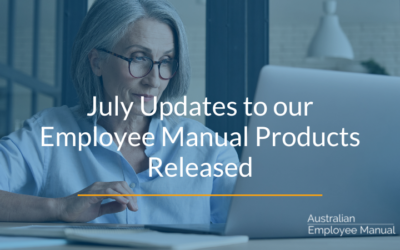When businesses grow enough to hire employees, they often do so on a “handshake” type arrangement without fully considering all the implications.
This person will represent you and your company to your clients, be on your premises, and gain access to all your knowledge and resources. How can you ensure that what starts with great promise will continue to grow positively and not wither and die?
There are many strategies that small businesses use to effectively manage their people. One of the most important is having a clear, shared understanding of the expected and acceptable behaviour while in your workplace.
Unless you have an upfront and frank discussion about your expectations, you are setting yourself up for more challenges than is necessary. You generally have to go back and have the discussion when your employee has broken one of your unwritten rules and has ticked you off in the process.
Ideally, your baseline expectations need to be documented in a Code of Conduct, which will form part of your HR Policies and Procedures Manual.
This makes it clear to an employee what is expected and the consequences for not meeting these expectations, making it easy for the employee and you to refer back to if they stray from the path.
Having a clear Code of Conduct in place can also help protect you if you ever find yourself in a situation where an employee takes you before Fair Work for unfair dismissal.
What Needs to be Included in a Code of Conduct?
Let’s start with the basics – what behaviour do you want to see in the workplace? Always start with a statement of the behaviour you want to see exhibited by your employees.
You need to set some clear boundaries, including obeying lawful instructions. This includes complying with professional association rules and all workplace health and safety guidelines and regulations to ensure a safe work environment.
Next, consider aspects of respecting other employees and your clients. This needs to include all aspects ranging from verbal and physical behaviour, through to discrimination and harassment.
We usually recommend a section on integrity which includes privacy, the confidentiality of all sensitive information related to the organisation, clients, and colleagues and the need to disclose any conflict of interest that may arise during their work.
Diligence is one of the most litigated areas, so it needs careful attention. This is where you specify things such as punctuality, wasting time, alcohol & drugs and attitude. Many people lose their jobs over lack of diligence, but unless you have clearly spelt out what you expect, you potentially leave yourself open for cases before the courts.
Finally – consider including something on efficiency, including features such as not stealing, wasting or misusing resources or property.
How Do You Implement Your Code of Conduct
Implementing your Code of Conduct is essential for creating a positive and respectful workplace or community.
Here are some steps you can take to effectively implement your Code of Conduct:
1. Communicate the Code of Conduct
To make your Code of Conduct more than just a piece of paper, it’s essential to communicate it to your employees.
Discuss what each point in the Code means and why it is there. This can be done during the induction process and by discussing it in team meetings.
Give your employees some hypothetical examples so they can decide whether the behaviour example falls within your Code of Conduct. Hypotheticals are a great way to explore possibilities and boundaries in a non-confrontational manner.
You can also include reminders in emails and posters to ensure everyone is aware of the Code of Conduct.
By talking about the Code with your employees, you can help them understand what is expected of them, making it easier to meet your expectations.
2. Encourage buy-in
Encourage members to buy into the Code of Conduct by clarifying how it benefits everyone in the team. For example, a respectful and positive workplace or community will lead to better collaboration and more positive outcomes.
3. Enforce the Code of Conduct
Enforce the Code of Conduct consistently and fairly. Make it clear that violations will not be tolerated and that there will be consequences for those who do not follow the Code.
4. Review and Update the Code of Conduct
It is essential to regularly review and update the Code of Conduct to ensure that it remains relevant and effective. Ask for feedback to identify areas for improvement and make changes as needed.
Following these steps, you can effectively implement your Code of Conduct and create a positive and respectful workplace or community.




